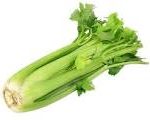It’s hard to believe that this time last year, we were basking in 20 degrees heat and headed for the beach over the Easter holidays. This year it’s a case of wrapping up well and trying to endure persistent freezing temperatures. It does all seem rather unnatural, particularly since it feels like it should be spring now that we’ve planted the potatoes. People shake their heads and say that the world is gone mad and climate change is causing havoc, but then again March has a track record of throwing up unpredictable weather. So perhaps this is just normal.
Either way, the cold weather has caused things to slow down in the veg patch after a couple of productive weeks. Growth in my seedlings in the polytunnel has slowed almost to a stop—the lack of sunlight means I am not even having to water them all that much since the potting compost is not drying out. One suspects that the newly planted spuds aren’t doing a whole lot in the cold ground outside either. Rhubarb, the only thing that was starting to be very productive, seems to have been knocked back too with the leaves looking burned. I fret that it’s frost damage and wonder whether they will bounce back.
This growth pause couldn’t come at a worse time really, considering that the larder is now starting to look very bear. This week we used up the last of our stored carrots, onions, shallots and pumpkins (though I have to say that I was cheered up immensely when I cut open the last pumpkin and saw the beautiful, vibrant orange colour of the flesh). So anyway, with the exception of chutneys/pickles, some frozen veg in the freezer, and the stalwarts of the polytunnel (oriental greens) and the winter veg garden (purple sprouting broccoli, perpetual spinach and chard)—pickings are slim indeed. All of nature is in a holding pattern—roll on the spring.
Operation GIY Nation—6 Projects. 6 Months. 1 Healthy, Happy Family
Operation GIY Nation, our programme to get families growing food, starts up again this week. We are aiming to help families that have never grown food before to start their GIY journey and help them to get over that early, daunted phase. The idea behind the campaign is simple—we give your family a simple growing project to do each month for six months, thereby gradually building your level of expertise and confidence. We start this month with growing cress (one of the absolute easiest things to grow) and by September we will have you and your family growing your own spuds for Christmas. Sign up to receive the projects, absolutely free, at www.giyireland.com/giynation.
Operation GIY Nation—we can get your family growing food! Sign up to receive monthly simple GIY projects that you can do with your family.
Things to Do This Month—April
To Do
If poor weather in March has hampered your outdoor work, then April is the month to catch-up. The key words for April are weeds and slugs. You need to stay on top of them both. Check your early spuds regularly and earth-up as required. Water your tunnel/greenhouse—things can get pretty warm on a nice sunny April day and seedlings will dry out quickly.
Sow
Indoors: lettuce, tomato, pepper, chilli-pepper, cucumber, celery, celeriac, basil, leeks, cabbage, cauliflower, Brussels sprouts, parsley, courgette, marrow, globe artichoke, beans, sweet corn and pumpkin.
Outdoors: broad bean, onion sets, pea, beetroot, cabbage, spinach, Brussels sprouts, parsnip, spring onion, leek, carrot, radish, broccoli, turnip. Plant out cabbage plants when they are 15/20 cm tall into well prepared soil that has been manured.
Harvest
Stored fruit and vegetables are likely to be a distant memory at this stage and new crops are only starting to trickle in which makes April a tricky proposition. The middle of this month might see the first asparagus and the first early spring cabbage. The other two star performers this month are purple sprouting broccoli and rhubarb.
Recipe of the Week—PSB with anchovy and chilli dressing
When the first harvests of purple sprouting broccoli (PSB for short) arrive, I always reach for this recipe from Hugh Fearnley Whittingstall—it’s a sinch to make and proves that PSB can be a meal in itself (or at the very least an exciting starter).
Ingredients:
- 700g PSB or curly kale
- 50g anchovy fillets
- 150ml olive oil
- 2 garlic cloves
- fresh thyme
- ½ small red chilli (or a pinch dried flakes)
- 1 teaspoon dijon mustard
- 2 teaspoons red wine vinegar
Blend all the ingredients bar the PSB in a blender until smooth. Steam the PSB for just 3–4 minutes. Toss in a knob of butter. Warm the dressing over a low heat adding a knob of butter. Arrange the PSB on a plate and drizzle over the dressing. Serve with crusty bread to mop up the juices. Delicious.
Tip of the Month—Protecting Brassica Seedlings from Cabbage Root Fly
Brassica seedlings (cabbage, kohlrabi, broccoli, kales) are vulnerable to cabbage root fly—the maggot of the fly bore in to the roots of the plants. Protect the seedlings with brassica collars which go around the base of the plant on the ground and prevent the fly from laying its eggs. You can buy collars or make your own with carpet, underlay or roofing felt—a 3-inch disc of material will do the job. Growing garlic or chives nearby also puts them off apparently though I am always skeptical about how well companion planting like this works in practical terms!
GIY Campaigns
This year, we’re all about getting Ireland growing! Check out our website for more information on the GIY Get Ireland Growing campaigns:
GIY Get Ireland Growing Fund in partnership with AIB. If you are a community group or school developing a growing initiative in Ireland you can apply for a grant between €500 and €5000. Check out our website for application forms and criteria.




